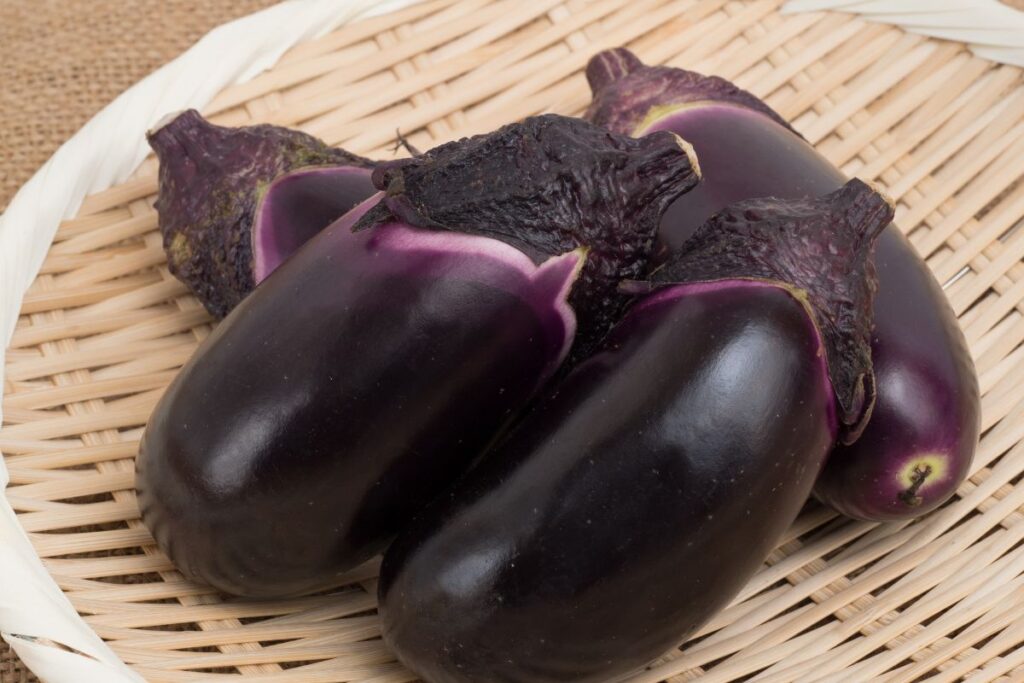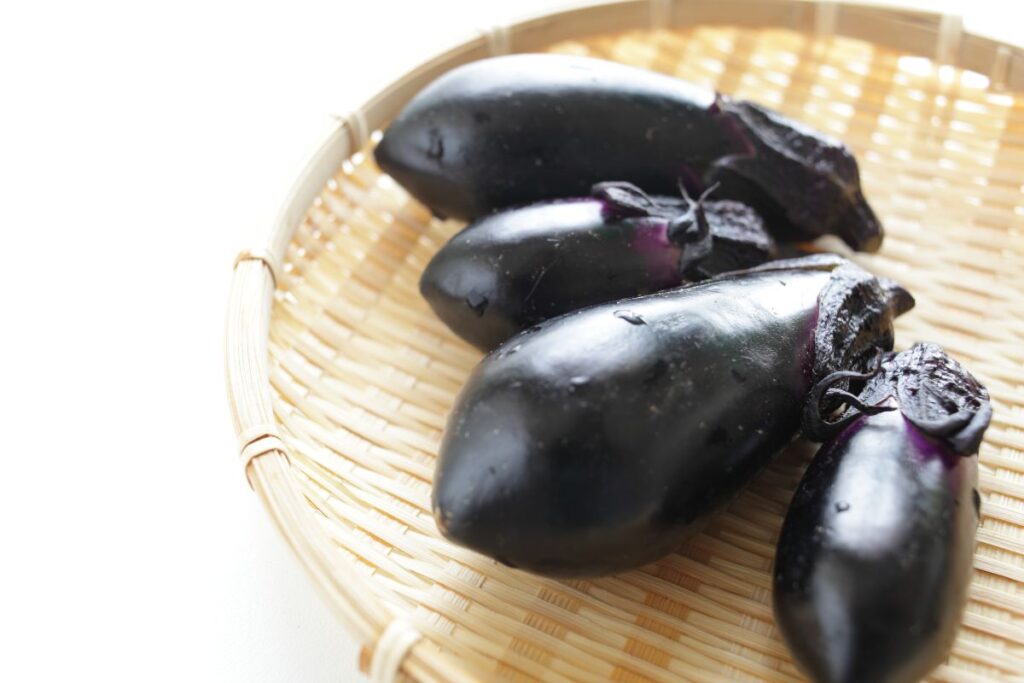Are you up for a culinary adventure? Dive into the world of Japanese eggplants. These versatile veggies are the real deal—they mix perfectly into all kinds of dishes and still manage to shine with their unique taste and texture. Let’s discover what makes them so special!
But how do you pick the perfect eggplant? And what’s the best way to prepare it?
Whether you’re a seasoned cook or new to the kitchen, understanding the versatility of Japanese eggplants can take your culinary creations to new heights. From sizzling stir-fries to grilling techniques that bring out their natural sweetness, the possibilities are endless.
Join us on a journey as we explore the art of preparing Japanese eggplants, discover cooking methods that will make your taste buds dance, and find inspiration in delectable recipes.
Get ready to elevate your dishes with simplicity and sophistication, as we delve into the unexplored flavors and textures that Japanese eggplants have to offer. Read on, and prepare to be amazed.
Selecting the Perfect Japanese Eggplants
To select the perfect Japanese eggplant, you’ll want to look for a smooth, shiny skin and a firm texture. This is your first step in asserting control over the quality of your meals.
Don’t settle for anything less; a dull or blemished skin often hints at an overripe or damaged interior, which can drastically affect the dish’s outcome.
You must also consider the eggplant’s size and weight. A heavier eggplant for its size suggests a denser, less seed-filled interior, promising a better texture and flavor for your cooking. It’s about making informed choices that align with your culinary goals.
Next, give it a gentle squeeze. The ideal candidate will have a slight give under pressure, indicating ripeness, yet it should bounce back, a sign of its freshness and vitality. This tactile feedback is crucial; it’s your direct link to assessing quality.


Preparation and Cooking Tips
Once you’ve selected your ideal Japanese eggplant, it’s crucial to prepare it properly to maximize its culinary potential.
Begin by washing the eggplant under cold water to remove any dirt. Don’t peel it; the skin is tender and packed with nutrients. To prevent it from turning brown, cut right before you’re ready to cook.
For a basic preparation, slice the eggplant into rounds or strips, depending on your recipe. If you’re aiming for a dish with less bitterness, sprinkle salt on the slices and let them sit for about 30 minutes.
This process, known as sweating, draws out some of the eggplant’s natural bitterness along with excess moisture, ensuring a more concentrated flavor. Afterward, rinse the slices and pat them dry.
When cooking, remember that Japanese eggplants absorb oil like a sponge. To control the amount of oil absorbed, brush the slices lightly with oil rather than pouring oil directly into the pan.
This technique gives you the power to enhance the eggplant’s creamy texture without it becoming overly greasy.
Whether you’re grilling, baking, or stir-frying, high heat will bring out the best in your eggplant, rendering it perfectly tender and delicious.
Stir-Fry and Sauté Ideas
After preparing your Japanese eggplants with the steps outlined, exploring stir-fry and sauté techniques can further elevate its flavor profile. These methods let you take the reins, ensuring your eggplant turns out exactly as you like it.
For a stir-fry, you’ll want to cut your eggplant into bite-sized pieces. Heat a bit of oil in a wok or large frying pan over medium-high heat, then toss in your eggplant.
Stir frequently to prevent sticking and to ensure even cooking. This is your canvas; add in other vegetables like bell peppers or snap peas, and some protein like chicken or tofu for a complete meal.
Season with soy sauce, garlic, and a touch of ginger for an authentic touch.
Sautéing your eggplant is equally straightforward and customizable. Slice your eggplant thinly for faster cooking. In a pan over medium heat, add a dash of oil, then your eggplant slices.
Cook until they’re golden brown, flipping once. Here, you’re in control. Add spices or herbs to match your dish’s theme. Think Italian with garlic and basil, or maybe a sprinkle of curry powder for an Indian flair.
Both methods are quick, simple, and leave room for creativity. You decide the flavors, making your dish uniquely yours.
Grilling and Roasting Techniques
Grilling or roasting Japanese eggplants unlocks a rich, smoky flavor that you’ll absolutely love incorporating into your meals. When you take control of the cooking process, using these methods, you’re not only enhancing the taste but also ensuring the texture is exactly to your liking.
For grilling, start by slicing the eggplants lengthwise to expose more surface area to the heat. Brush them lightly with oil and season to taste.
Place them on a hot grill, turning occasionally, until they’re beautifully charred and tender. This direct heat method intensifies the natural sweetness of the eggplant, giving you a perfect balance of flavors.
Roasting requires a bit more patience but is equally rewarding. Preheat your oven, and prepare your eggplants as you’d for grilling. Arrange them on a baking sheet, and don’t be shy with the seasoning.
Roast them until they’re soft and the edges start to caramelize. This slower cook time allows the eggplants to develop a depth of flavor that’s both complex and comforting.


Delicious Recipe Inspirations
Why not elevate your culinary adventures by trying out some mouthwatering Japanese eggplant recipes? You’ve mastered the art of grilling and roasting these versatile vegetables, now it’s time to harness their full potential in your kitchen.
Japanese eggplants are perfect for a range of dishes, from simple stir-fries to complex curries, thanks to their tender texture and ability to absorb flavors like a sponge.
Start with a classic: Miso-glazed Japanese eggplant. This dish will have you brushing slices of eggplant with a savory miso paste before broiling them to perfection.
It’s a delightful blend of umami flavors that you can control to suit your taste, adding more miso for depth or a touch of honey for sweetness.
Or, why not try your hand at a comforting Japanese eggplant curry? Simmer these slender beauties in a rich sauce made from coconut milk, curry powder, and your choice of protein.
It’s a customizable recipe where you’re in charge of the spice level and the array of vegetables added.
You’ll find that experimenting with Japanese eggplants can transform your meals, offering a fresh and exciting twist to your cooking repertoire. Take control and let your creativity flourish with these delicious inspirations.
Conclusion
So, you’ve learned how to pick the perfect Japanese eggplant, prep it like a pro, and cook it in versatile ways. Whether you’re stir-frying, sautéing, grilling, or roasting, these techniques will elevate your dishes.
Now it’s your turn to experiment in the kitchen. Try those delicious recipes and let your creativity flow. Remember, there’s no right or wrong when it comes to flavors. Enjoy the journey and make each dish uniquely yours.
But hey, maybe you have a different opinion. Maybe you think Japanese eggplants are overrated or that there are better vegetables out there.
We want to hear from you! Leave a comment below and let’s know your thoughts. We love a good debate and might even learn something new from your perspective.
So go ahead, try out those recipes, and don’t forget to share your thoughts. Happy cooking!




Konnichiwa! (Hello!) I'm Pat Tokuyama, a Japanese tofu cookbook author, who travels for music, food, and adventure. If you like Japanese tea, checkout some of the newestorganic japanese tea, matcha bowls and noren and more!
** Curious about the Plant Based Japanese Cooking Club? ** Learn more here!